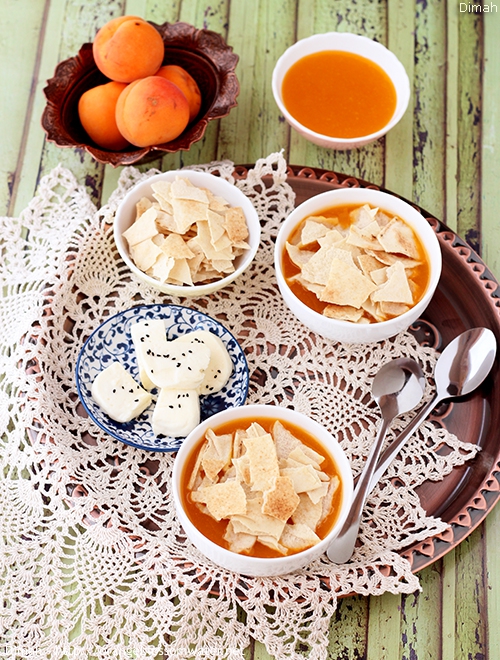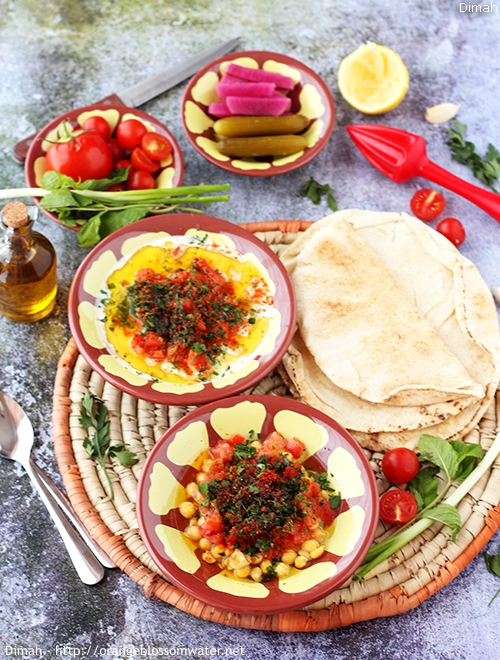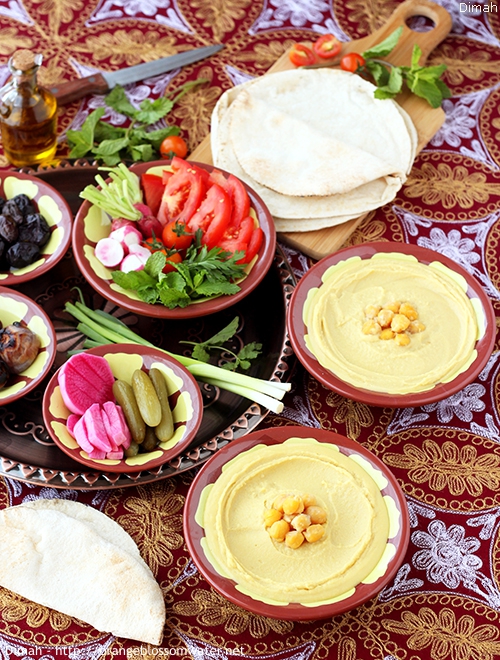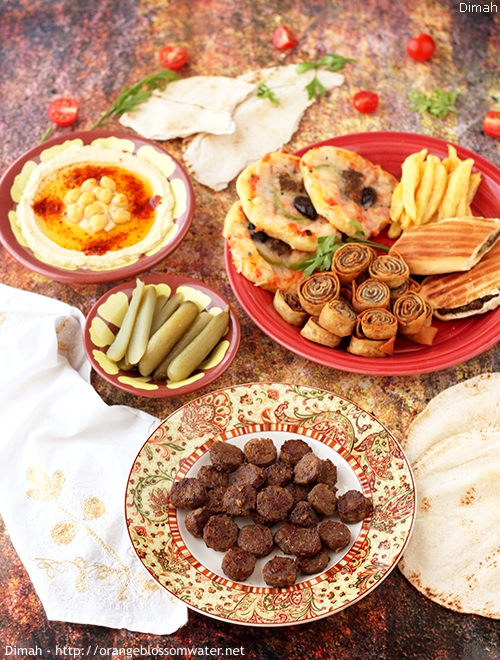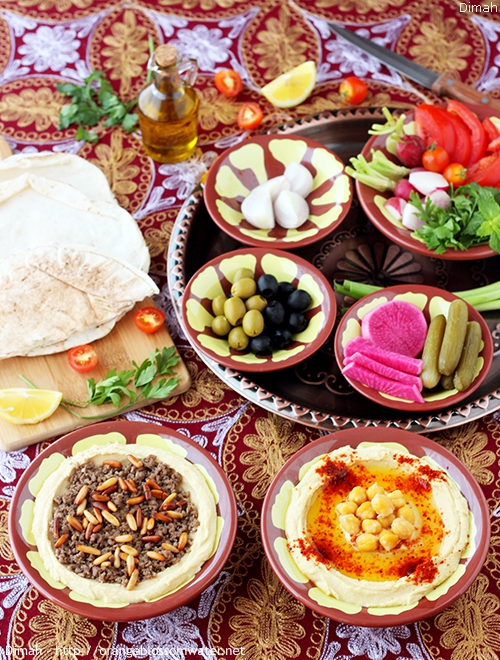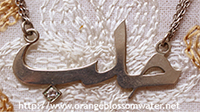Qamar Ad-Din is dried apricot paste, the origin of Qamar Ad-Din is Syria. Qamar Ad-Din is used with various recipes such as Sharab Qamar Ad-Din, Fattet Qamar Ad-Din, Mhlabiyeh (Qamar Ad-din Pudding) and Nqou’eiyeh (Qamar Ad-Din cooked with rice).
Fattet Qamar Ad-Din is Sharab Qamar Ad-Din eaten with crispy flat bread, a specialty of Hama and Aleppo. In Aleppo, it is named Mariset Qamar Ad-Din. It is an easy recipe, a simple dish, yet delicious. Eaten in summer as breakfast, lunch or snack.
Let’s Make Fattet Qamar Ad-Din:
